3 Companies with a Strong Brand and Their Journey to Success
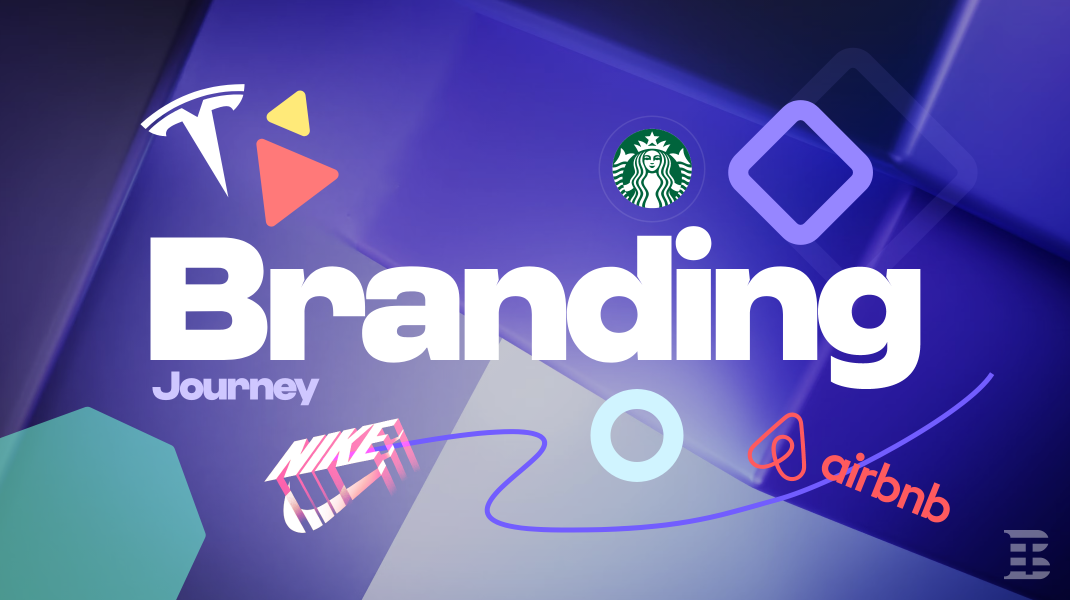
Why do people deal with branding, even those who walk away and say "I'm not interested in branding"? Is a brand more than a one-time image and branding more than creating a design or logo? When did branding start? And why is it so important and popular nowadays?
So, keep reading, find answers to all these questions, and discover surprising stories of your favorite brands and their behind-the-scenes journey.
What is Branding?
In short, branding is the process of creating and shaping a brand.
To look deeper branding is a part of everything we do as humans. It is a way of non-verbally signaling to others who we are, what we believe in, and what our priorities are.
Consumers prefer to support companies they believe in, so a company needs to build and maintain a positive public perception. This perception is what ultimately shapes the brand.
“Branding is everything you do and say. It's about how you communicate and what your values are. Your brand is your story and your promise.”
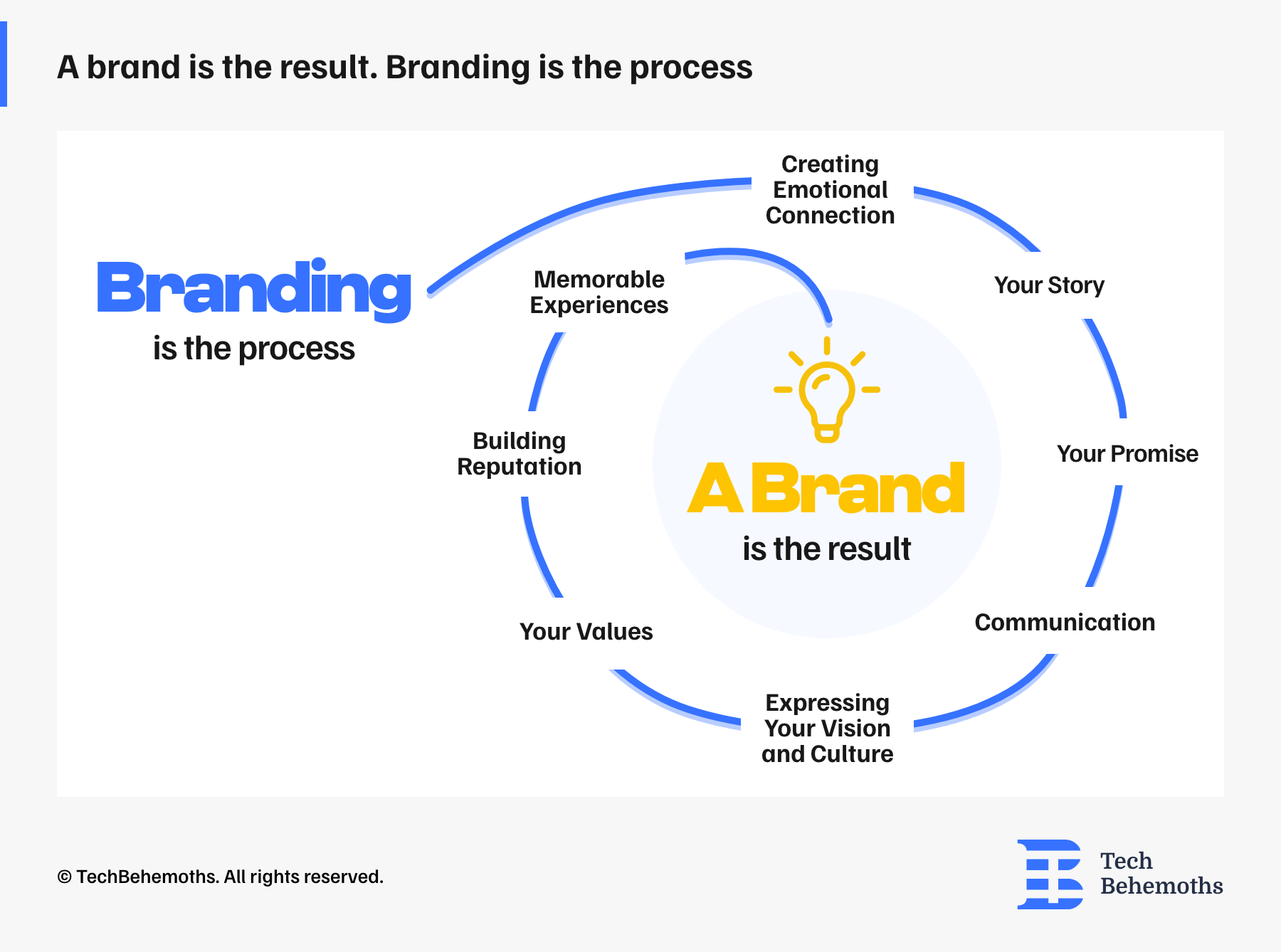
The Evolution of Branding
Branding is one of our earliest behaviors as humans. As far back as 10.000 years ago we started to construct symbols to communicate our beliefs.
In Ancient Norse, "brandr" means "to burn." Originally, a brand was a burning piece of wood later described as a torch. By the 1500s, it became common for farmers to burn symbols on their animals to mark ownership. The signs were unique, simple, and distinctive - the main characteristics of any great brand. This practice laid the foundation for modern branding, where unique brands represent identity.
Later, from the 1750s to the 1870s, the Industrial Revolution introduced mass production, and companies had to differentiate themselves from their competitors. This led to the rise of trademarks, legally protected symbols, and logos representing specific companies.
In the early 20th century, brands started using print advertising to communicate their uniqueness and demonstrate the effectiveness of their products.
From the 1920s to the 1950s, radio and television brought brands directly into people’s homes, and made brands more memorable.
The post-World War II era saw the birth of modern branding from the 1950s to the 1960s. Brands started building emotional connections with consumers.
From the 1960s to the 1990s, branding grew up. Companies began to rebrand, refresh logos, and develop catchy slogans to stay relevant.
Since the 2000s, branding has been shaped by digital advancements and social media, used to connect with customers on a personal level, encouraging them to generate content for the brand.
Today, branding goes beyond products—it’s about purpose and mission. Companies build strong identities through social responsibility, emphasizing values like community involvement and sustainability, creating emotional connections, and maintaining a strong reputation through consistent, meaningful messaging.
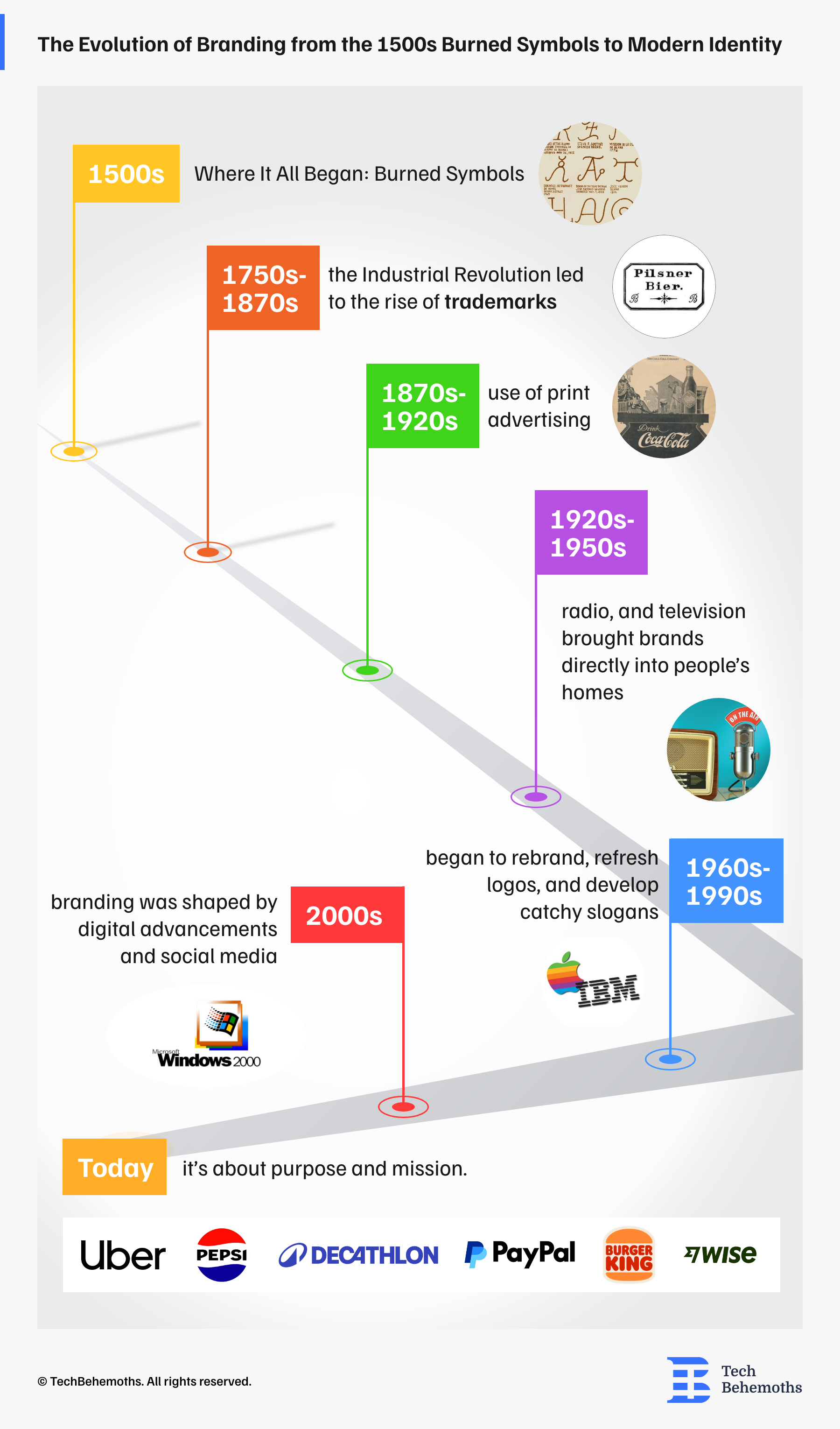
What Makes a Brand Truly Successful?
Building a strong brand doesn’t happen overnight. Building a strong brand takes time.
It always starts with an idea that fulfills a need or desire. After that, the brand goes through a journey of change and growth that is essential to its success.
A lot goes into making a brand successful: strong teamwork, smart budgeting that ensures a good customer experience, and creating a sense of community that tells a consistent story and generates emotion.
’A brand is truly successful when it meets consumer needs in ways that your competitors do not.’

Source: https://beloved-brands.com/brand-positioning/
’A successful brand should connect with consumers by offering real benefits.’
Functional benefits make life easier by helping people stay connected, save money, simplify tasks, and support health. Emotional benefits create strong connections, like a sense of belonging, comfort, pride, and optimism.
To build a strong brand, find 2-3 areas where your brand can shine. Focus your message on these areas. Go beyond just selling products, connect with people on a deeper, emotional level.
’A successful brand keeps customers coming back and gives customers great experiences. ’
Next, we invite you to discover how famous brands managed to become famous and loved. What are their main secrets and strategies and how do they build their strong identities?
From Just an Electric Car - to Tesla
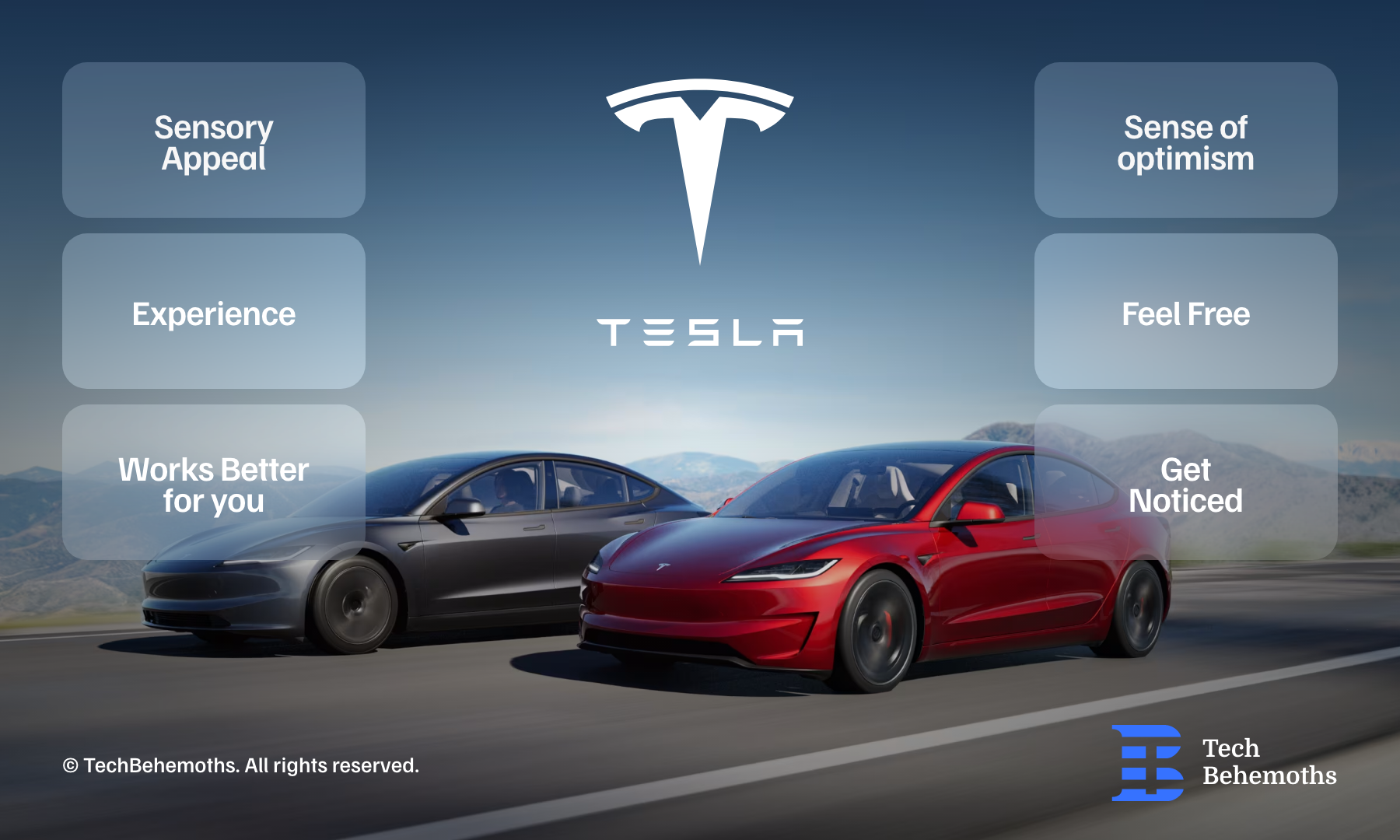
Tesla was founded in 2003 by engineers Martin Eberhard and Marc Tarpenning. Elon Musk joined as the company's largest investor, investing $6.3 million in Tesla and becoming chairman in early 2004.
From the beginning, Tesla wasn't just about building cars, it was about changing the world. Their mission was to accelerate the world's transition to sustainable energy. This purpose resonated with consumers and tech enthusiasts, giving the brand a clear identity.
Despite skepticism from industry experts who doubted that electric vehicles could become mainstream, in 2008, Tesla released its first vehicle, the Tesla Roadster, a high-performance, stylish, and durable vehicle. Tesla focused on premium products first, and this way established itself as a luxury brand. When Tesla released the Model S in 2012, it set new standards in the industry with its design, technology, and performance. It was not just an electric car—it was the best car on the road.
Innovation has positioned Tesla as the most technologically advanced automaker. Tesla's focus on vertical integration—in which the company designs, manufactures, and sells its products without relying on third-party suppliers—gives it immense control over product quality and innovation cycles.
One of Tesla’s biggest branding moves, and one that’s no less important, was its rejection of the traditional dealership model. Instead, Tesla adopted a direct-to-consumer (DTC) model, selling its cars through its website and a network of showrooms. This way, the brand could engage with potential customers, and educate them about its products, technology, and mission.
Elon Musk played a huge role in shaping the Tesla brand. His charisma and willingness to engage with the public on social media made him the face of the company. His public announcements, live events, and viral tweets kept Tesla in the spotlight. He turned Tesla into more than just a company, it became a cultural phenomenon that people wanted to be a part of.
Tesla spent little on traditional advertising, relying instead on organic word of mouth and viral marketing.
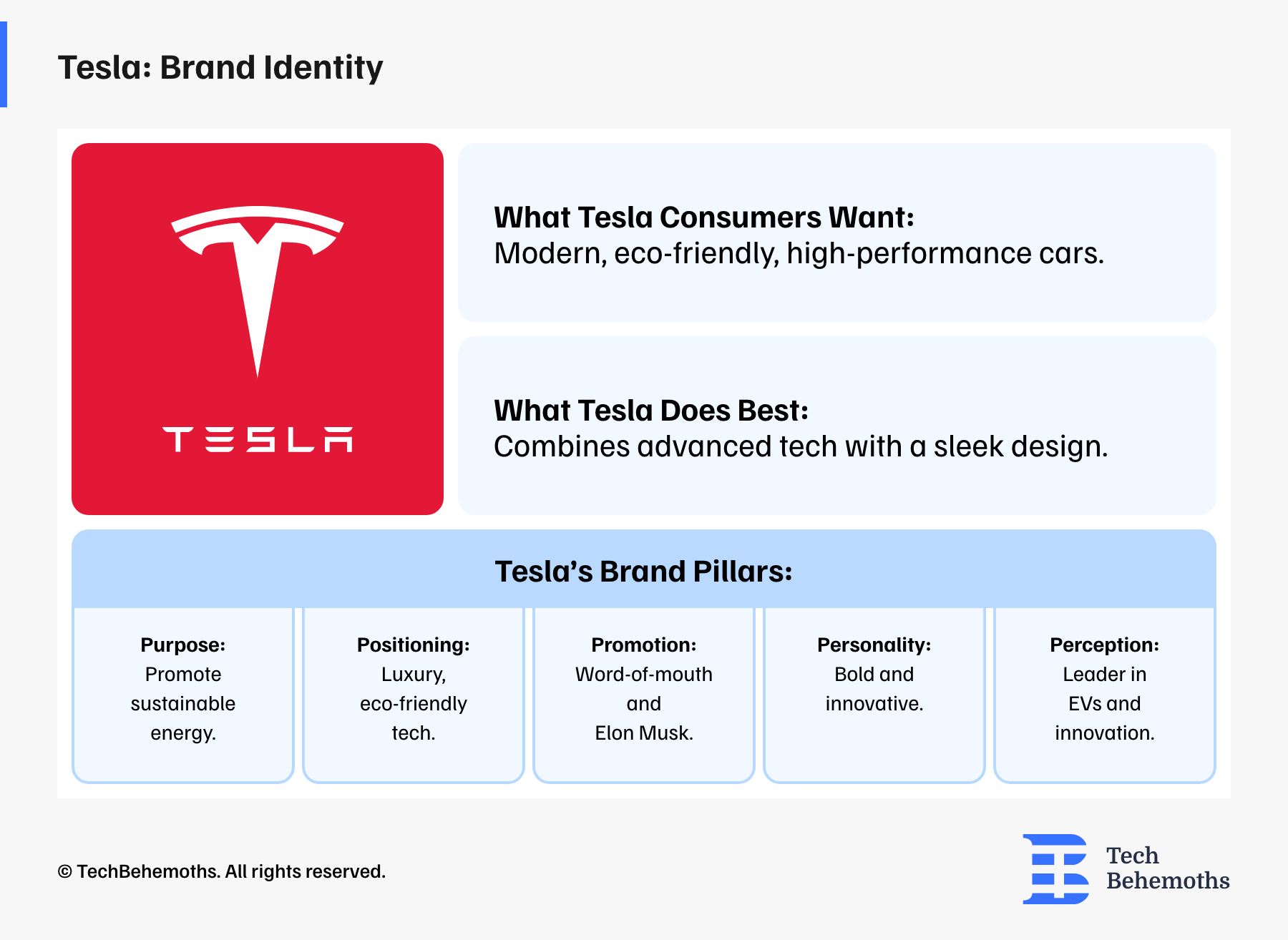
The Tesla brand is more than just a fancy “T” logo. The Tesla brand is about its mission of innovation, technological advancements, high performance, style, and sustainability in its vehicles. Plus to this, it’s about a great showroom network and a community vibe all driven by Elon Musk's vision.
From Just Coffee - to Starbucks

Initially, Starbucks was not the café we know today. It was a retailer of high-quality coffee beans and equipment, with the first store opening in 1971 in Seattle.
In 1982, Howard Schultz became the Director of Retail Operations and Marketing at Starbucks. During a trip to Italy, he was inspired by the café culture, where people enjoyed espresso in a cozy place between home and work. Schultz wanted to change Starbucks from a store that only sold coffee beans into a café that offered a full coffee experience. This idea of creating a "third place" for people to relax and connect appealed to many, especially in urban areas where people needed a break from their busy lives. This vision became the main brand-building strategy that helped Starbucks become a global success.
Starbucks built its brand by creating a unique and consistent customer experience. The atmosphere in Starbucks—cozy and inviting, with the smell of fresh coffee—became a key part of its identity. Each store was designed to make customers feel welcome, featuring warm lighting, comfortable seating, and friendly baristas who remembered your name and order.
Premium pricing is one of Starbucks’ early strategies that helped the brand position itself as a luxury coffee experience. Starbucks focused on maintaining high quality by using ethically sourced beans and brewing coffee that was richer and more flavorful than what you typically find in fast food or diners. This approach allowed them to charge more, maintaining their premium image.
Starbucks also introduced new products, like the Frappuccino, which became very popular. Seasonal drinks, such as the Pumpkin Spice Latte, became part of the Starbucks experience. These signature drinks created a sense of exclusivity and excitement, especially with limited-time offers.
Starbucks has a highly successful loyalty program, Starbucks Rewards, which encourages frequent visits by offering rewards like free drinks and personalized promotions. This strengthens customer loyalty and makes them feel appreciated and part of the community, while also boosting sales and providing valuable data for targeted marketing.
Starbucks has led in using digital and social media to build its brand. From the start, Starbucks used platforms like Facebook, Instagram, and Twitter to connect with customers, creating a community through two-way conversations. This approach attracts younger audiences with contests and user-generated content.
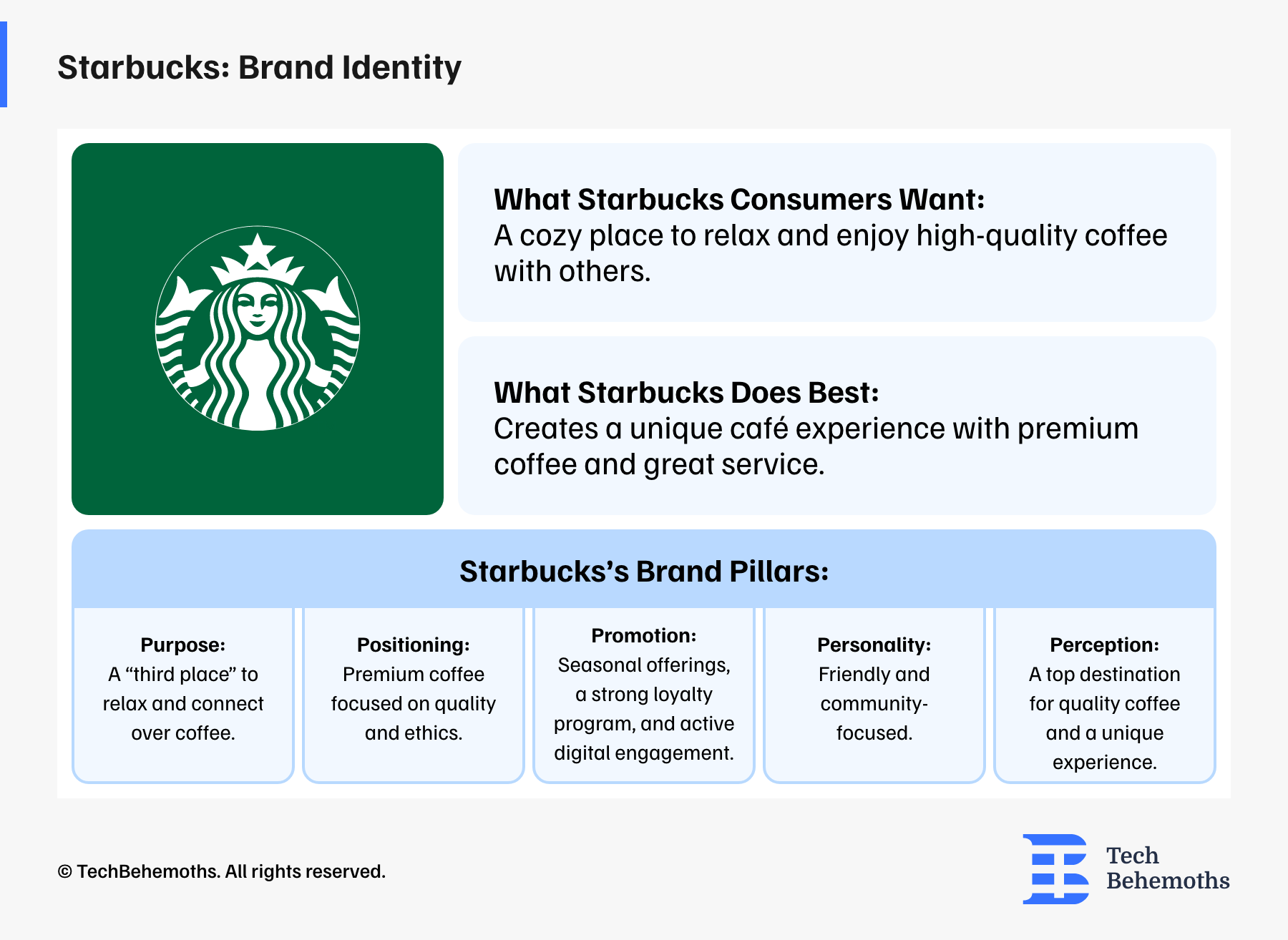
Starbucks is more than just the iconic green logo, it has become a lifestyle brand. It is about the experience of sitting comfortably, enjoying that familiar cup of coffee with your name on it, relaxing, and taking a break. It has become part of the daily routine, loved by Starbucks customers.
From Just a Platform - to Airbnb

Another brand success story is that of Airbnb. Their story began in 2007 when Brian Chesky and Joe Gebbia, two designers, were struggling to pay rent in San Francisco. With a major design conference in the city, they noticed that hotels were fully booked, leaving attendees without a place to stay. They installed an air mattress in the living room of their apartment and offered guests an “Airbed and Breakfast.” The idea was simple: give people a cheaper alternative to hotels while creating a more personal, local experience. This was the seed that eventually became Airbnb.
Nathan Blecharczyk soon joined them as a technical co-founder, helping to build the platform. The trio turned their initial idea into a website where people could list, discover, and book unique accommodations around the world.
Airbnb changed the way people travel! But it hasn’t always been that way. In the beginning, the biggest challenge was the lack of trust between hosts and guests. Early-stage investors doubted whether people would trust foreigners enough to rent their homes By implementing reviews, secure payments, host insurance, and a 24/7 support system, they were able to build this trust, which is one of the most important pillars of Airbnb’s brand success and has become an essential part of its brand identity.
Airbnb’s brand was also built around the idea of experience. People weren’t just booking a place to stay. They were becoming part of a community where travelers and hosts, build strong relationships, creating a sense of belonging.
Airbnb offered something different—authentic, personal stays. Its branding campaigns, such as “Belong Anywhere,” highlighted the experience of “living like a local", and the idea that Airbnb could make the world feel more intimate and accessible.
Airbnb wasn’t just a platform—it was a way of life. This message attracted a new generation of travelers. One of Airbnb’s best moves for building its brand was its use of storytelling. The company understood the power of user-generated content—like when guests share their personal experiences from their trips or when hosts share their stories about hosting their homes. Plus, they made the most of high-quality photos that highlighted their unique properties, tapping into that emotional vibe we all feel when we think about traveling.
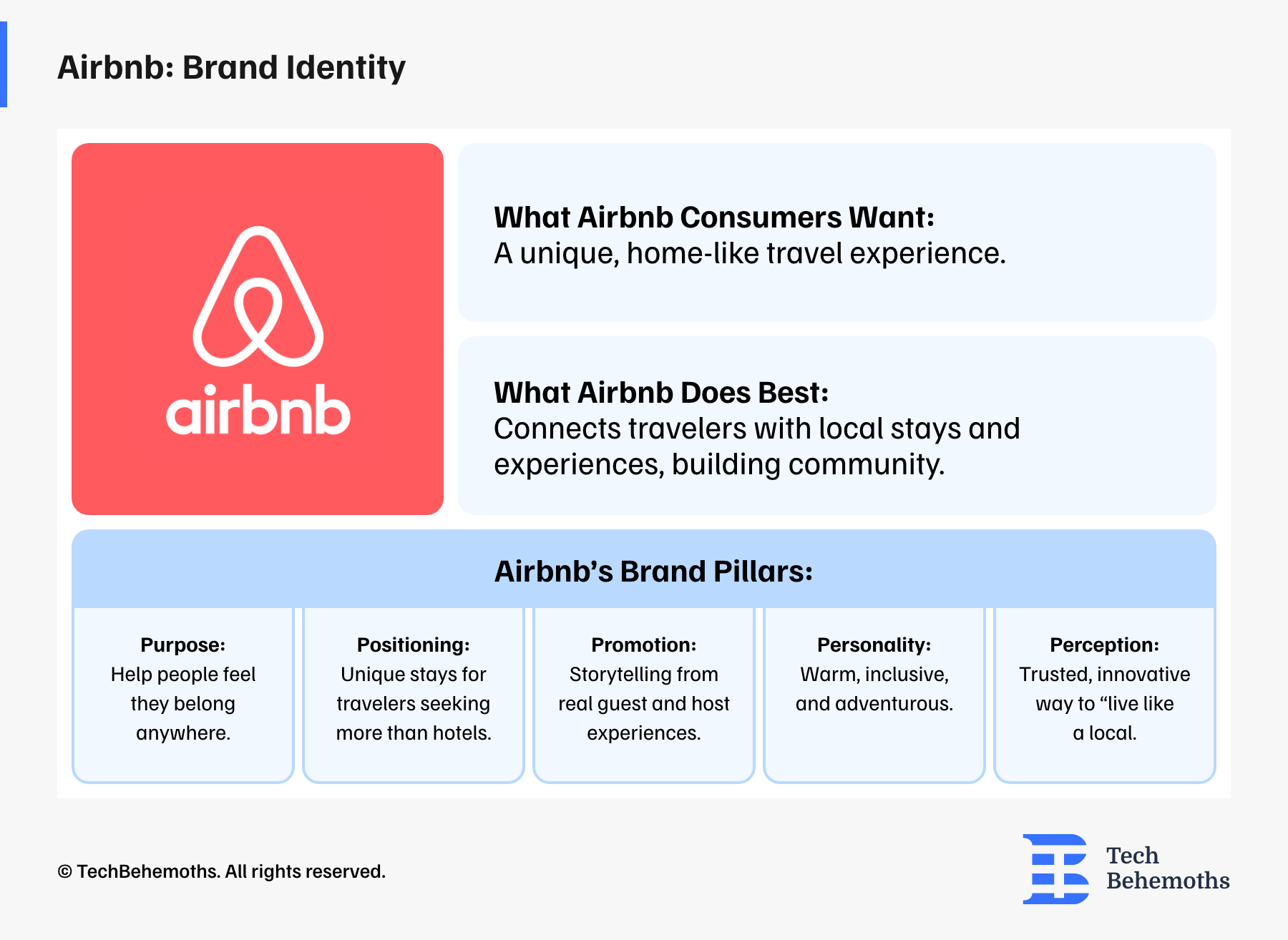
Airbnb is more than just a booking platform - it's about feeling at home, no matter where you are. You can trust, feel safe, and enjoy the experience of that place.
Wrapping Up
A brand gives your company identity, makes it memorable, influences consumer choices, supports marketing efforts, and makes employees proud, and consumers happy. A Brand is not just a logo—it’s a story, an experience, and a connection with people.
A brand inspires and influences our daily lives. A brand is a beloved part of our culture.
What is your relationship with brands? Are you planning to launch your own brand? Would you need help from trusted companies providing brand strategy services?
The journey starts with an idea and is followed by detailed planning and the most challenging part, which is execution.